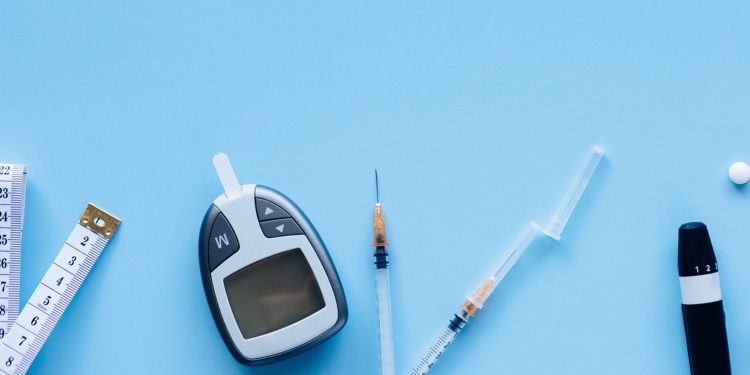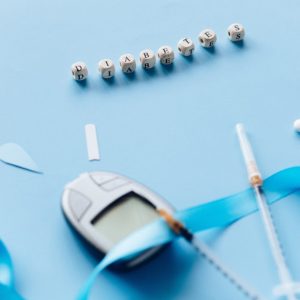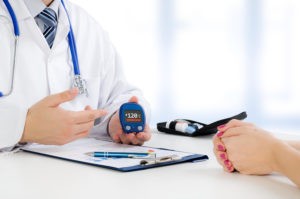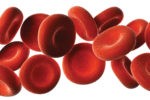Diabetes and Cancer

During National Diabetes Month in November, it is important to understand and raise awareness about the link between diabetes and certain types of cancer.
Story by Ann Butenas
Nearly 30 million people in the United States have some type of diabetes. Sadly, one in four people don’t even realize they have this disease. This is good reason to raise awareness about diabetes, and National Diabetes Month is a great platform by which to do so. National Diabetes Month is conducted each November to increase awareness about diabetes, its risk factors, symptoms, and forms of the disease. If you have recently been diagnosed with Type 1 or Type 2 diabetes – or even if you are considered pre-diabetic – this is the month to learn more, check out the latest research, and connect with others who can help you on this journey. It is time to live a healthier life.

Forms of Diabetes
When you cannot produce insulin, a hormone found in the pancreas that is responsible for breaking down carbohydrates into blood sugar or glucose and used for energy, Type 1 diabetes can occur. Although it can affect people of any age or background, Type 1 diabetes typically affects children.
The most common form of the disease is Type 2 diabetes. This occurs when the body cannot process internal insulin effectively enough to keep blood sugar at normal levels. You may be predisposed to Type 2 diabetes if you are overweight, older than 45 years of age, if a parent had Type 2 diabetes, you are relatively inactive, and/or you have been diagnosed with pre-diabetes. If you want to improve your chances of avoiding diabetes, losing weight is the number one key. It is important to exercise at least 30 minutes a day, up to five times each week.
Diabetes and the Risk of Cancer
When you think of diabetes, you might not necessarily think of cancer. However, researchers are learning more and more about the link between Type 2 diabetes and certain types of cancer. Research has shown that individuals who have diabetes also have an increased risk for liver, colorectal, pancreatic, breast, bladder, and endometrial cancer.
But what exactly is the connection between diabetes and certain types of cancers? Well, researchers are not entirely sure. It could be because abnormal insulin levels can put you at greater risk of getting cancer. Conversely, it could be due to other health issues associated with diabetes. These include, but are not necessarily limited to, obesity, inflammation, and increased blood sugar. When blood sugar levels fluctuate and are not stable over time, it can adversely affect your other organs. Thus, if you have diabetes, the best thing you can consistently do is to make sure your blood sugar levels are under control.
 While diabetes Type 2 and certain types of cancers share common risk factors, some of these risk factors are manageable and within your control:
While diabetes Type 2 and certain types of cancers share common risk factors, some of these risk factors are manageable and within your control:
- Your age. As you get older, not only does your risk for Type 2 diabetes increase but so does your risk for cancer.
- Overall, men are more likely to be diagnosed with cancer and also have a slightly higher risk of getting diabetes than women do.
- Ethnicity/Race. While African Americans and non-Hispanic whites are more likely to develop cancer, African Americans, Hispanics/Latinos, and Asian Americans/Pacific Islanders are at a greater risk of being diagnosed with Type 2 diabetes.
- Your weight. You want to keep this in check. If you are overweight, you can increase your risk of Type 2 diabetes and certain types of cancer.
- Stay active. That is great advice. The more active you are, the more likely you are to reduce your risk of getting Type 2 diabetes and cancer.
- Smoking and alcohol. While smoking is related to several types of cancer, it can also increase your risk of getting Type 2 diabetes. Alcohol is also a culprit. More than one drink a day for women and more than two drinks a day for men puts you at greater risk for diabetes. Heavy drinking can also damage cells and lead to cancer.
While there are definitely some risk factors you cannot control, such as race, gender, and age, you can control your weight, your diet, your level of activity, and your overall lifestyle. In a nutshell, if you want to reduce your risk of being diagnosed with Type 2 diabetes and/or cancer, simply lose weight if you need to, stay active, eat healthy, quit smoking, and reduce alcohol intake.
Additionally, be sure to have preventative cancer screenings. Speak with your healthcare provider about which screenings you should have, based on your age and gender.
Ways to Observe National Diabetes Month
1) Live a healthier lifestyle. This not only translates to getting more exercise and drinking enough water, but it also means getting enough sleep. Fatigue can actually cause insulin resistance in your body.
2) Prepare a “sick day” kit. Some days, diabetes can get you down and leave you feeling under the weather. For these days, keep some key items on hand, such as blood glucose monitoring supplies, some ketone test trips, glucose tablets, a thermometer, and a timer to remind you to stay on top of your glucose levels.
3) Assemble a small cookbook. Yes, when you have diabetes, it can restrict your diet. However, that doesn’t mean it has to weed out taste and enjoyment. Look at special cookbooks and websites designed for diabetics. Experiment with some of those recipes and make a collection of your favorite ones.
While diabetes is a serious disease that should not be taken lightly, it can be managed. When you have your diabetes under control, you are in a better position to decrease your risk of developing certain types of cancer. There is a lot to be gained by living a healthy lifestyle.





